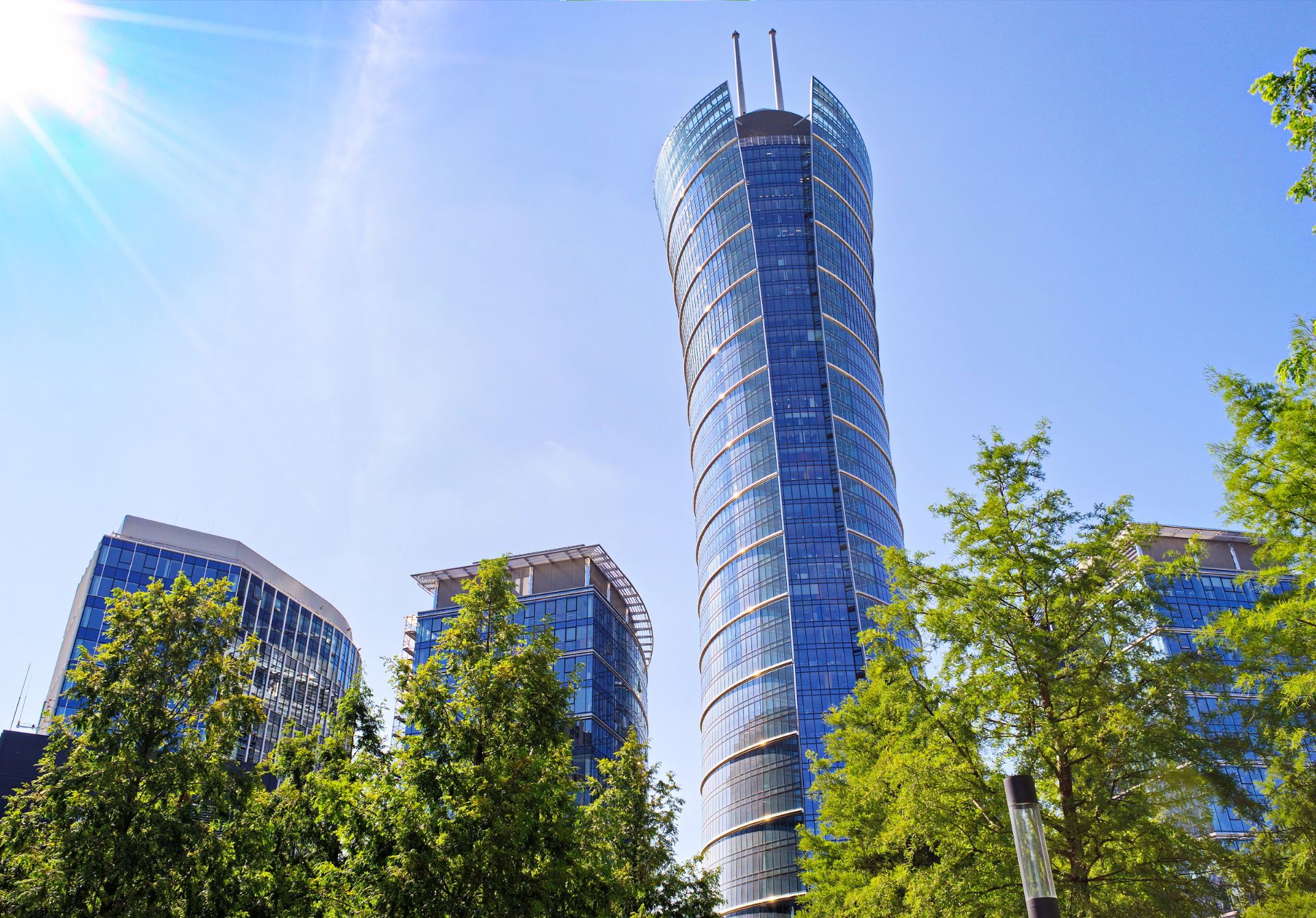The Warsaw Spire stands as a testament to the Polish capital’s rapid development and its growing status as a major European business hub. This iconic skyscraper, completed in 2016, has quickly become one of the most recognizable landmarks in Warsaw’s evolving skyline. In this article, we’ll explore the various aspects of this remarkable structure, from its innovative design to its impact on the local community and economy.
Architectural Marvel: Design and Construction
The Warsaw Spire was designed by the Belgian architectural firm Jaspers-Eyers Architects in collaboration with Polish architects Projekt. Standing at an impressive height of 220 meters (722 feet), it is currently the second-tallest building in Poland, surpassed only by the Varso Tower.
The complex consists of three buildings:
1. The main tower: A 49-story skyscraper with a unique, curved glass facade 2. Two lower buildings: 15-story structures flanking the main tower
The design of the Warsaw Spire is characterized by its sleek, modern appearance and innovative use of materials. The facade features a double-skin glass curtain wall, which not only enhances the building’s aesthetic appeal but also contributes to its energy efficiency. This design allows for abundant natural light while minimizing heat gain and loss.
Sustainable Features and Green Certifications
The Warsaw Spire is not just a visually striking building; it’s also a leader in sustainability. The complex has been awarded BREEAM Excellent certification, recognizing its commitment to environmental performance and energy efficiency. Some of the building’s sustainable features include:
1. Rainwater harvesting systems 2. High-efficiency HVAC systems 3. LED lighting throughout the complex 4. Green spaces and vertical gardens
These features not only reduce the building’s environmental impact but also contribute to lower operating costs and improved comfort for occupants.
Impact on Warsaw’s Business Landscape
The Warsaw Spire has played a significant role in cementing Warsaw’s position as a major business center in Central and Eastern Europe. With over 100,000 square meters of Class A office space, the complex has attracted numerous international corporations and local businesses alike. Some of the notable tenants include:
1. Samsung Electronics 2. JLL (Jones Lang LaSalle) 3. Mastercard 4. Goldman Sachs
The presence of these high-profile companies has helped to boost Warsaw’s reputation as a desirable location for international business operations, contributing to the city’s economic growth and job creation.
Plac Europejski: A New Urban Space
One of the most innovative aspects of the Warsaw Spire project is the creation of Plac Europejski (European Square), a 1.5-hectare public space adjacent to the complex. This beautifully landscaped area features:
1. Water features and fountains 2. Green spaces and gardens 3. Outdoor art installations 4. Cafes and restaurants
Plac Europejski has quickly become a popular gathering spot for both office workers and local residents, fostering a sense of community and providing a much-needed green space in the heart of Warsaw’s business district.
Cultural and Social Impact
Beyond its business significance, the Warsaw Spire has also become an important cultural landmark. The complex regularly hosts events, exhibitions, and installations that engage the local community and visitors alike. Some notable examples include:
1. The “Art Walk” initiative, which features rotating exhibitions of contemporary Polish art in the building’s public spaces 2. The annual “Spire Music Festival,” showcasing local and international musical talent 3. Charitable events and fundraisers organized in collaboration with tenant companies
These initiatives have helped to integrate the Warsaw Spire into the city’s cultural fabric, making it more than just another office building.
Challenges and Controversies
While the Warsaw Spire has been largely celebrated, it has not been without its challenges and controversies. Some of the issues that have arisen include:
1. Concerns about the impact on local traffic patterns and infrastructure 2. Debates about the building’s height and its effect on the city’s historical skyline 3. Questions about the long-term sustainability of Warsaw’s rapidly expanding office market
Despite these challenges, the Warsaw Spire has generally been viewed as a positive addition to the city, with its benefits outweighing potential drawbacks.
The Warsaw Spire stands as a powerful symbol of Warsaw’s transformation from a post-communist capital to a modern, dynamic European metropolis. Its innovative design, commitment to sustainability, and integration with public spaces make it a model for future urban development projects.
As Warsaw continues to grow and evolve, the Warsaw Spire will undoubtedly remain a key landmark, attracting businesses, visitors, and admirers from around the world. Its success has paved the way for further ambitious projects in the city, ensuring that Warsaw’s skyline will continue to change and inspire for years to come.
In conclusion, the Warsaw Spire is more than just a skyscraper; it’s a testament to Warsaw’s resilience, ambition, and vision for the future. As the city continues to establish itself as a major player on the European stage, the Warsaw Spire will stand tall as a beacon of progress and possibility.

